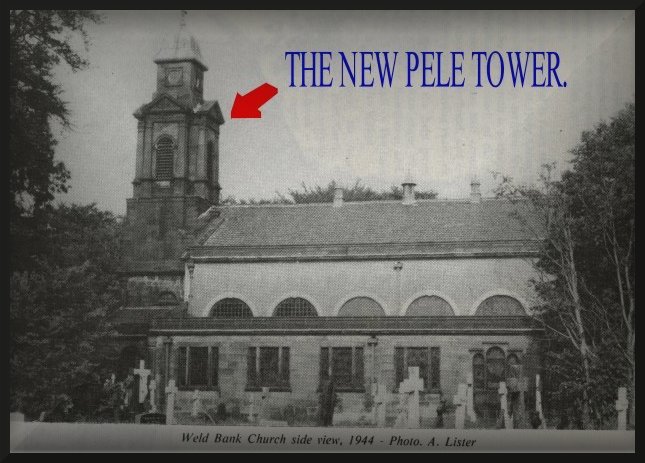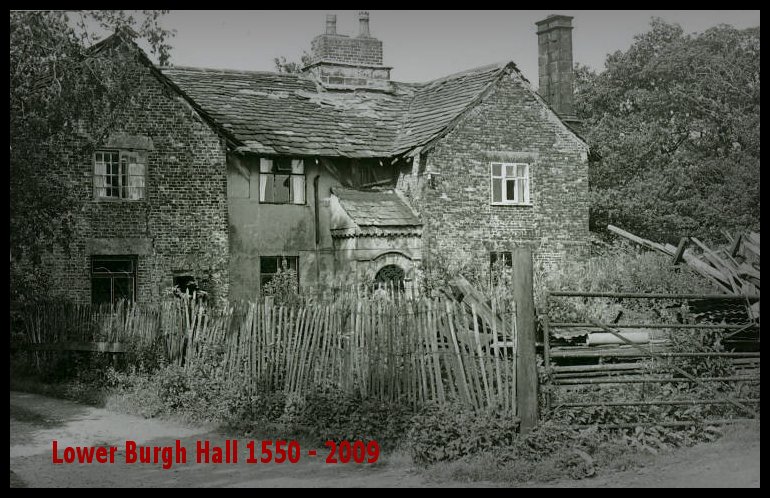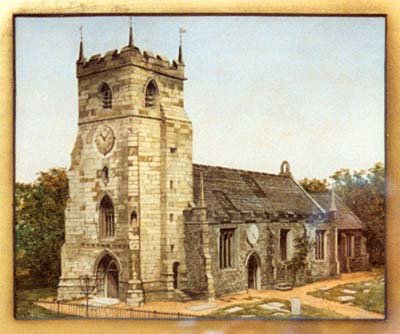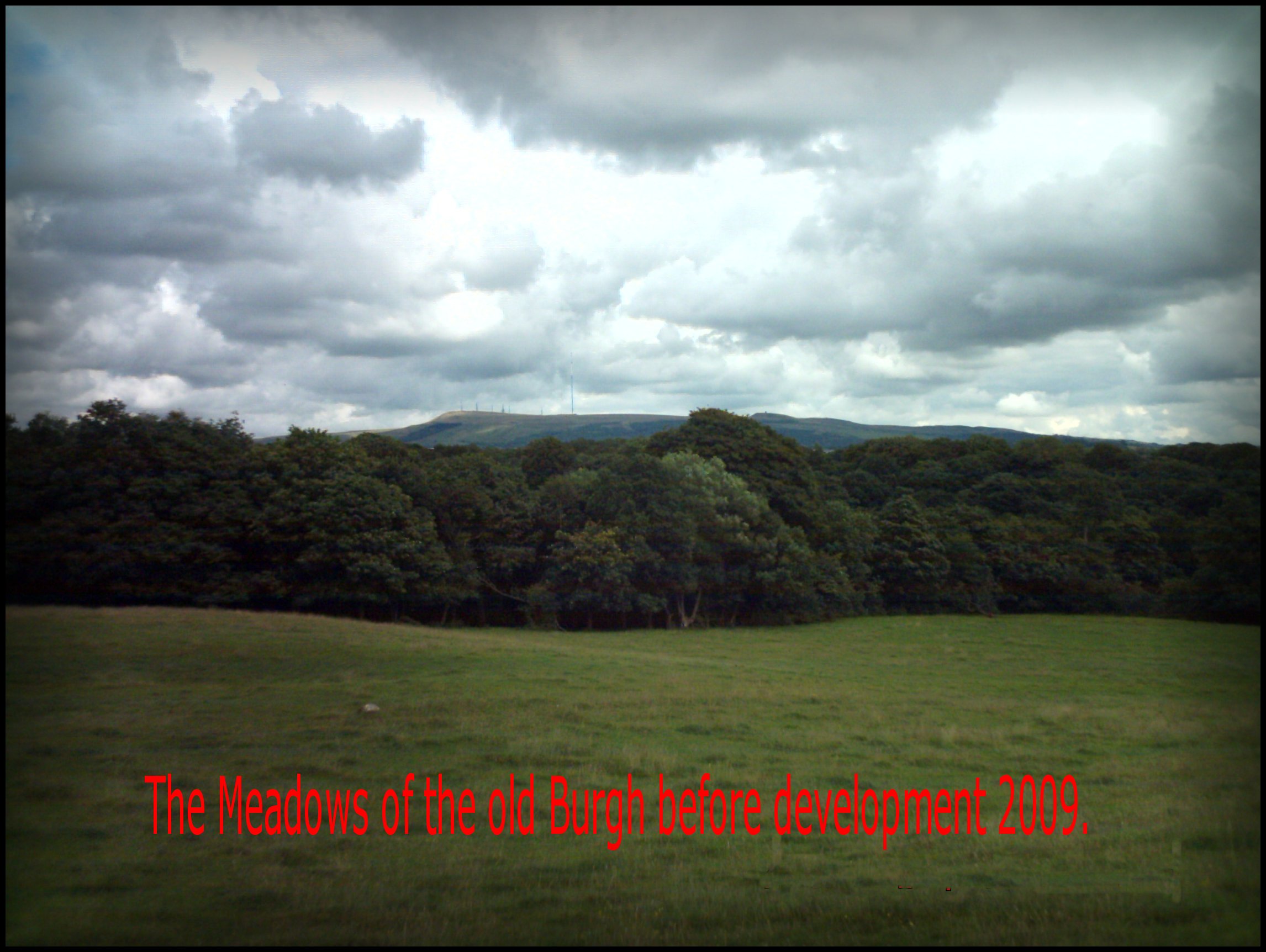![]()



The
Standish Families upon the Manor of Chorley in the year 1584
- parishioners of the Parish Church of Chorley - St. Laurence.
Was Myles
Standish born upon the Manor of Chorley and within the Parish of Chorley in the
year 1584?
1.
The Standish family of the Pele Tower who in the year 1584 were the Lord of the
Manor of Duxbury but lived upon the Manor of Chorley within the parish of Chorley
and were parishioners of the Parish Church of Chorley – St. Laurence.
2.
The Standish family of the Burgh who were major landowners
upon the Manor of Duxbury and the Manor of Chorley lived in the year 1584 upon the Manor of Chorley
within the parish of Chorley and were parishioners of the Parish Church of
Chorley – St. Laurence.
3. Consequently if Myles Standish was descended from either of the Standish families of the Pele or Burgh he would have been born upon the Manor of Chorley within the parish of Chorley and his birth lawfully registered for the year 1584 in the register of the Parish Church of Chorley – St. Laurence.
Clearly the hand of fraud in the year 1812 that tore the baptismal page and thus removed many names for the year 1584 from the parish register recognized that the entry
“Myles Standish” would block the inheritance claim of a very distant descendant
of Frank Standish.
The Location of Pele Tower of the Standish family.

Pele Tower of Hugh Haydock de Standish completed in the year 1315.
1304 - 1631 - The Pele Tower was the home of the Standish family - Lords of the Manor of Duxbury.
1304. Deed of the Standish family of Duxbury.

1590 - 1648.
Early maps show the Pele Tower to the west of the River Yarrow on the High ground between the Manor of Chorley and the Manor of Duxbury.
The Pele to the west ot the River Yarrow the old Burgh to the east of the river.

Map date 1648
The High ground to the west of the River Yarrow is recorded in early documentation as Weldbank and Higher Red Bank the peaks of each being over the Duxbury Manor boundry upon the Manor of Chorley.
Maps of the boundary between the Manor of Duxbury and the Manor of Chorley.

Of the two-recorded peaks Weldbank was the highest peak upon the Manor of Chorley. The Weldbank peak and adjoining land in Duxbury (but not Higher or Lower Red Bank) was owned by the Saxon "Duxbury family" descendants of Deowuc who sold the site to Hugh Haydock de Standish in 1304.
Hugh Haydock de Standish built his Pele tower on the highest peak (Weldbank) upon the Manor of Chorley and the Standish family became parishioners of the Parish Church of Chorley - St. Laurence.

The Manors of central Lancashire within the Leyland Hundred in the year 1300.
1631 - 1812.
The Standish family leave the Pele tower and move into the first Duxbury Hall situated East of the river Yarrow next to the great Barn of Duxbury.
The Standish family have been the Lords of the Manor of Duxbury since 1435, however they did not live upon the Manor of Duxbury in the Parish of Standish until 1631.

Deed of the Standish family of Duxbury.





![]()
1631 - 1774 - 1815 - 2009.
A new life for the Pele tower as the RC Church of St. Gregory the Great.
1631 the Pele Tower was part of the farm of Thurston Hodson, who used
the old Pele tower as a barn.

In the year 1700 the Old Catholic Chapel was behind Burgh Hall the home of the Chadwick family and Mass at the Chapel had to be said secretly due to the risk of fines or imprisonment.

reference by Mr T Gillett - Weldbank Church.


1774. The Pele Tower / Barn was used as the Roman Catholic Church of St. Gregory the Great.
reference by Mr T Gillett - Weldbank Church.

1815 - 2009: A New Church built upon the foundations of the Old Pele Tower.


1815 the Pele Tower/Barn became the substantial foundations of the new church of St. Gregory the Great.


The Church tower facing west looks out across Lancashire County to the
port of Liverpool, the Irish Sea and the Atlantic Ocean. From the date of
construction in 1815 the westerly view of the Port of Liverpool would have
witnessed the departure of many thousands of ordinary citizens English – Irish –
Scottish and Welsh departing to find a new life in the United States of
America.


Weldbank Church - 2009.
The church tower of St Gregory is supported by the deep foundations of the Pele tower of the Standish family their home from 1310 – 1630.

Weldbank Church - 2009.
The tower with its cross high in the sky provides a fitting memorial monument to the Standish Family of Lancashire and their descendants.
![]()
The Standish family of Burgh.
1541 - 1700 - Lower Burgh Hall upon the Manor of Chorley the home of the Standish family of Burgh.


The Standish family of the Burgh were also parishioners of the Parish Church of Chorley - St. Laurence.
Chorley Parish Church of St. Laurence: date 1631

– Thurstan Standish of the Burgh.


Thurston Standish and his descendants were Catholics in common with the Standish Family of Standish.
Thurston Standish of the Burgh is officially recorded as a "younger brother of Standish of Standish"
Thurston Standish of the Burgh upon Duxbury Manor is reputed to be the second son of Sir Alexander Standish Lord of the manor of Standish 1468 to 1507.
Deeds of the Standish family of Standish Hall.
Land and buildings in Burgh Duxbury / Chorley and Land upon the Manor of Duxbury.
Standish Deed 1. - year 1230.

Standish Deed 2. - year 1240.

Standish Deed 3. - year 1241.

Birkacre Mill - Burgh - Chorley. year - 1250 - 1448..

Thurston Standish of the Burgh upon the Manor of Duxbury resided upon land purchased by his grandfather Ralph Standish (Lord of the Manor of Standish 1445 - 1468 ) from Richard Greg in 1442.


Earwaker refers to Duxbury Hall in his translation of the 1514 Standish
Deed. The deed refers to the Hall that the Duxbury Family were living in the
year 1514 this was the Old Ellerbeck Hall upon the Manor of Duxbury.

Ellerbeck Hall its orchards and lands remained in the ownership of the Standish family of Standish Hall until 1800 when Cecilia Standish sold Ellerbeck to the Hodson family who built the New Ellerbeck Hall.

Standish deed dated: 1531.
Ralph Standish Lord of the Manor of Standish 1507 - 1538 secures title to land at the Burgh in Duxbury in the year 1531. Ralph Standish then transfers the land to Thurston Standish of the Burgh at Duxbury.
![]()
1584.
Was Myles Standish born in the Parish of Chorley Lancashire England?
Around the year 1584 there are many entries in the Parish Register
relating to the Standish Family of the Pele tower and also to their cousins the
Standish family of the Burgh who also resided just several hundred yards on the
Chorley side of the boundry between the Manors of Chorley and Duxbury.Less than one English mile separated the Pele Tower and Lower Burgh
Hall.
Thus if Myles Standish had been born at the Pele tower or at the Burgh
in 1584 he would have been born within the parish of Chorley and his birth
recorded within the parish register for that year in common with the rest of
his family.
More evidence to support the wide held belief that the eroded and torn page in
the parish register for the year 1584 was a wilful act in 1812 to deny his
descendents any claim of inheritance to the Duxbury estates in Lancashire
England.

Parish Church of Chorley – St. Laurence.
In the year 1584 when Myles Standish was born, both of the Standish families who were the major landowners of the Manor of Duxbury resided upon the Manor of Chorley within the Parish of Chorley.
The Standish families had the prime burial vault under the Alter of Parish Church of Chorley – St. Laurence.

The parish registers of the Church of St. Laurence between the years 1540 – 1750 record the Births, Deaths and marriages of parishioners within Chorley and fromother Parishes other than Chorley.
The ownership of burial places within the Church along with the ownership of seats in the Church was strictly limitedto the gentry who lived within the Parish of Chorley.
There were many disputes between local families over burial rights in the church and the allocation andlocation of seats within the Church.
On many occasions a Church Court was convened to resolve such disputes.
Thomas Charnock took his dispute to the Court of King James 1.
Standish v Charnock. dispute 1618 -1622.
Alexander Standish who died on the 18th June 1622
commenced preparations for his burial as detailed in his will dated 31st
March 1622 to find that his right to burial in the Chapel of Chorley was being
challenged in court by Thomas Charnock of Astley. (the Charnock and Standish
families being joint owners of the Chancel in the Chapel of Chorley at that
time)
Thomas Charlock’s action was retribution for the arrest of William
Charnock on the 16th January 1618 by the hand of Alexander Standish.
The dispute was so acrimonious that and persuaded the King to appoint a
commission of judges to determine the outcome. King James also strictly forbade
any burials in the disputed Chancel and enjoined George Comey, vicar of
Croston, Richard Smith, curate of the chapel of Chorley, the churchwardens of
Chorley and the parish clerk not to make any grave in the Chancel or allow any
burial of the said Alexander Standish until the suit was decided.
Thus it would not normally be possible for landed gentry from another Parish such as the Standish family of Duxbury (the Manor of Duxbury being in the Parish of
Standish) to gain the prime burial rights in the Chancel beneath the alter of
the Church of St. Laurence in the Parish of Chorley.
However the Standish family of Duxbury only lived upon the Manor of Duxbury in the Parish of Standish from 1631 when the family moved into their newDuxbury Hall.
The Pele tower, the original home of the Standish family (Lordsof the Manor of Duxbury) was built by Hugh Haydock de Standish in the year 1304 on the highest point upon the Manor of Chorley within the Parish of Chorley, just several hundred yards on the Chorley side of the boundry between theManors of Chorley and Duxbury.
Thus the Pele towers location made the Standish family parishioners of the Parish Church of Chorley.
In 1304 Hugh Haydock de Standish had one major advantage over many of his neighbours he was of Norman descent whilst other local gentry were of Saxon descent. Consequently his Norman origins along with his residency within the Parish of Chorley gave him the maximum potential to secure the prime burial rights for his family in the Chancel beneath the alter of the Parish Church of Chorley.

Both Standish families in the year 1584 were parishioner of the Parish Church of Chorley – St. Laurence and the Parish register records births – deaths and marriages for both families.
Consequently if Myles Standish were born at the Pele Tower or the Burgh in the year 1584 his birth would have been entered into the register of the church of St. Laurence in common with other members of these families.
The Parish Church of Chorley – St. Laurence - the Parish register - Burials.

1.1571: Ann Standish of the Pele.
2. 1571: Laurence Standish of the Burgh.
3. 1571: Margery Standish of the Burgh.
4. 1572 Mary Standish of the Pele.

5. 1616: John Standish of the Burgh.

6. 1622: Alexander Standish of the Pele - Lord of the Manor of Duxbury.
The Parish Church of Chorley – St. Laurence - the Parish register - Baptisms.

7. 1582: Margeret Standish of the Burgh.

8. 1583: Ellyn Standish of the Burgh.
Unfortunately the one page in the registers of the Parish Church of St Laurence that has been desecrated is the page with the Baptism entries for the year 1584.
The desecrated page is said to have been torn and erased by the hand of fraud in the year 1812 to deny the descendants of Myles Standish their lawful inheritance to the Duxbury estates.
The Parish Register of the Church of St. Laurence - "Wilfully Eroded" said Mr Bromley of the USA in 1847.
The disputed ancient baptismal register of the Church of St. Laurence still exist to-day !


The Baptismal Register of the Parish Church of Chorley - St. Laurence opened at the pages covering baptisms for the year 1584 the year of the birth of Myles Standish. The top part of the page on the RIGHT (births 1584) has been torn off? The page was rebuilt to its original size by the use of tissue paper around 1922. The question of the alleged wilful damage to the Parish Births Register arose upon the death of Sir Frank Standish the last surviving Standish of Duxbury. Several persons put forward claims to be the next in line to inherited the Duxbury Estates including the descendants of Myles Standish in America. Conversely some 60 years earlier when Ralph Standish of Standish Hall, the last male Standish of the House of Standish died not one male came forward from England-Ireland-Isle of Man or America to claim title to the Estates of the House of Standish. The estate passed to his only surviving daughter Celia Standish. The Parish Birth Register at the Church of St. Laurence was a vital reference document for the claimants in search of a valuable inheritance. The fact is well recorded that the top part of the register for births in the year 1584 (the year used for the Birth of Myles Standish) was torn off and other parts eroded to the extent that they are unreadable. Many scholars have commented on the question of natural erosion or fraudulent erosion?
The desecration did not apply to the Burials for the year 1584 which are complete.
The Parish Church of Chorley – St. Laurence - the Parish register - Burials for the year 1584.

![]()
2009. The Old Burgh upon the Manor of Duxbury disappears under the onslaught of development.
2009. The demands of the 21st century are completely changing the landscape of the Burgh at Duxbury Lancashire England. The green fields and ancient hedgerows that would have been a familiar sight to Myles Standish as a child disappear under the onslaught of new developments. However a determined attempt has been made to celebrate and remember Myles Standish and the Standish family by naming roads such as the “Myles Standish Way” – “Pilgrim Way” in the development area. The erection of replica ancient crosses serves to remind all of the ancient history of the “New Burgh”.
Plan of the new development at Burgh that is accessed from the Myles Standish Way.
The roads within the development site are named in honour of Myles Standish.









![]()

BOOK by Mr T Gillett - Weldbank & the Church of St Gregory.
![]()

![]()